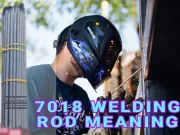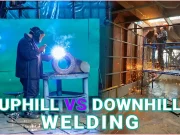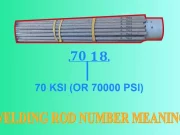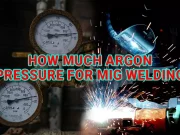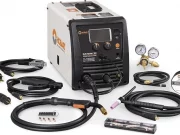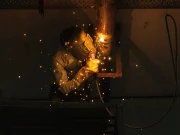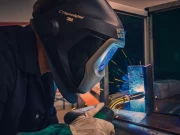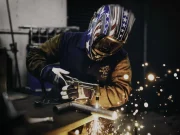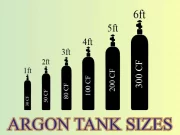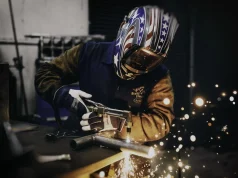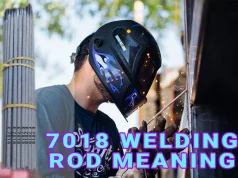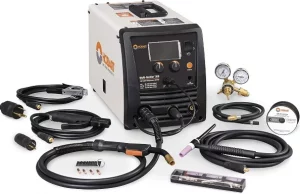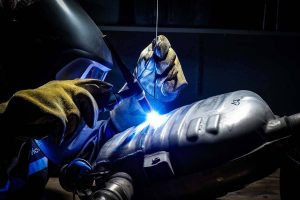
Let no one tell you otherwise; when it comes to welding, knowledge is power. So, when someone asks “how strong is a weld,” Keep in mind that the response will benefit them a lot. Welding might be the process of joining two materials together. But what good is a welded joint if it cannot hold up?
So, let’s provide some answers to this question quickly.
So, how strong is a weld?
The answer is this. Many factors help to determine whether your welded joint will be strong or not. These include factors like joint design, filler metal used, welding process, and competence of the welder. If these factors are in order, you can expect the welded joint to be as strong as your base material, the one it is joining. You also need to understand that most materials can become stronger or weaker after welding because of material changes caused by the heat. Finally, a weld can be stronger than or as strong as the base metal used.
Alright, that is it about welded joints and how strong they can be. Well, if you do things right, your welded joint would hold up well much longer. Anyway, continue reading for more on this topic.
What Factor Contributes To Weld Failure?
Welding is not all about joining metals. Your welds have to be sound, irrespective of the material you are welding. However, it is equally important to have a sound knowledge of factors that can contribute to weld failure.
Weld defects can be a result of inclusions or cracking, but these are not the only significant contributors.
Advice for you: Always think of the possibility of weld failure when welding any material. That way, you will be able to stay alert and have a sound weld. Weld failure can be massively catastrophic, particularly when the application is bearing load.
Let’s take a look at factors that contributes to weld failures and how you can solve them.
1. Presence of impurities
Impurity is one of the reasons cast aluminum is challenging to weld. When present in the welded materials, it can reduce the integrity of the piece.
I would also like to inform you that impurities can occur in diverse forms. The humidity present during the welding process or lubricant used can play a part.
What’s the solution? Let’s focus on cast aluminum. Before you start welding, ensure you clean up the material accordingly. Use the right solvent and wire brush before you join the parts together and start welding.
These alloys carry loads of impurities because of where they are commonly used. So before you start welding or even think of joining the parts together, ensure you clean them properly.
2. Poor weld design
Another factor that can cause weld failure is design error or insufficient weld sizes. When you use undersized weld to support a structure, then that structure may likely not hold up much longer.
What’s the solution? Well, if you are welding a highly restrained joint, ensure the weld isn’t too short or small for the said application. It causes welds to fail due to compression, tension, or bending loads.
Your choice of filler metal also plays a vital role in how strong your weld would be. So, if you are picking a filler metal for your welding project (particularly a high restrained joint), choose one with enhanced ductility and impact toughness.
3. Not adhering to the welding procedure
You can weld materials and have sound welds as a newbie. Most of the newly made welding machines can make it possible. Some come with preloaded programs and welding charts to give you the privilege of choosing the right settings for the material you intend to weld.
However, in welding, you may have to control the interpass temperature and follow the appropriate preheat procedure to avoid weld failure. When you adhere to these procedures accordingly, the cooling rate of the weld deposit and base material will be reduced to help lower the possibility of hydrogen cracking occurring. Usually, there’s a tendency for hydrogen cracking to occur when welding low alloy steels or carbon.
Again, keep in mind that your choice of filler metal plays a crucial role in the quality of your welds. For the records, filler metals have different characteristics, and it’s advisable to choose the right one for the material you are welding.
Note: You can use matching filler strength for your weld, but bear in mind that this can change. The factors that can decide whether overmatch filler will be ideal or not for the weld is how critical the application is and the base material you are welding. For some critical applications, an overmatch filler metal will be a good option.
But then, using undermatch filler metal may be a wise choice for some applications. It may help to reduce the possibility of a crack occurring. That is because it lowers the stress concentrated on the base metal.
Note: For knowledge sake, undermatching implies using filler with lower tensile strength than that of the base material.
Why You Should Avoid Weld Failure
Whether you are welding a gigantic structure or doing some repairs in your home, you need to avoid weld failure at all costs.
One of the reasons you should try your possible best to avoid weld failure is for safety reasons. Be it a static structure or not, a poor weld can be a threat to other people’s lives, including yours.
The lost productivity is also one of the reasons to avoid weld failure at all costs. Another one is the increased cost resulting from fixing the damages. It can cost you more time and resources to fix a weld failure.
Conclusion
How strong is a weld? That’s the question, and the answer has been provided at the beginning of this post. We also discussed some of the factors that can lead to weld failure. Well, the good thing about the welding machines we have these days is that most of them come with advanced technology that makes welding easier. Even a newbie can achieve sound welds without breaking a sweat. But as we discussed, it is essential to avoid weld failure at all costs by following the right welding procedure.


